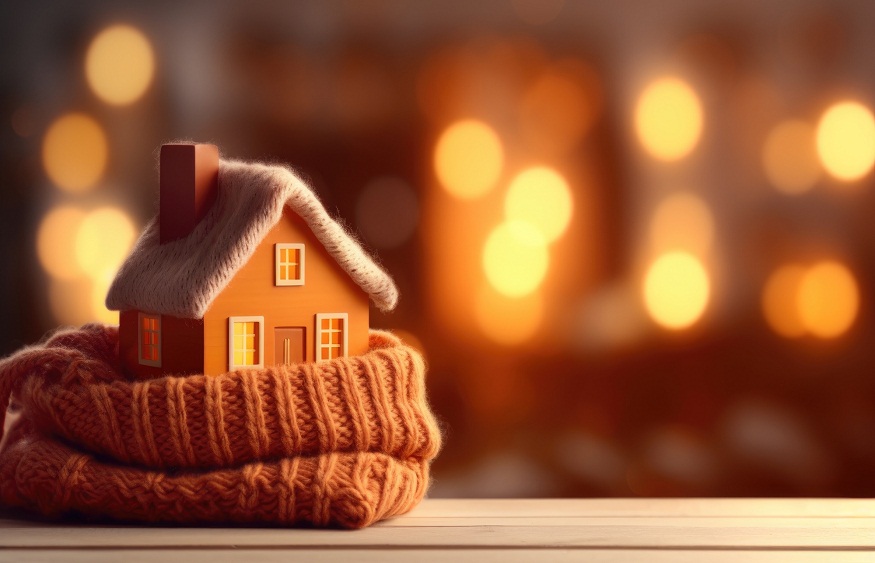The Best Materials for Keeping Your House Warm
With the onset of winter chill, maintaining a cozy, evenly heated home grows increasingly important, and expensive if you lack proper insulation and insulating materials. But upgrading your home’s insulation delivers fantastic value by reducing heating bills while keeping temperatures comfortable all season long.
Fiberglass Batts
The classic pink fiberglass batt insulation you have likely seen in walls and attics remains an excellent cost-effective choice for home insulation projects. Consisting of extremely fine glass fibers, fiberglass creates millions of tiny air pockets that resist heat transfer.
Easy installation between wall studs or attic joists plus affordability makes fiberglass batts an accessible insulation upgrade for many homeowners. Just be sure to wear protective gear when handling this itchy material. Look for higher-density fiberglass products with higher insulating R-values for enhanced thermal performance.
Blown-In Insulation
Rather than pre-cut batts, blown-in insulation gets its name from installers literally blowing or spraying the loose fibrous material into place using special equipment. The blown insulation then settles tightly into cavities and spaces where standard batts cannot reach.
Cellulose blown-in insulation made from recycled paper boasts impressive insulating qualities while providing stellar fire and moisture resistance. Some blown cellulose even contains extra plant fiber, like cotton or hemp, for superior eco-friendliness.
Blown fiberglass and mineral wool options also exist. This installation method allows insulating even irregularly shaped cavities while creating minimal disruption to interior walls. Blown-in products provide seamless blanket coverage for attics or hard-to-reach spaces.
Rigid Foam Boards
For basements, exterior walls or anywhere requiring continuous insulation without stud cavities, rigid foam boards make an excellent choice. These solid panels consist of closed-cell plastic foam that inherently resists heat conduction and airflow exceptionally well.
Conventional rigid foam boards from polystyrene or polyisocyanurate provide high R-values and moisture resistance for excellent insulation on foundations, roofs or anywhere you need a solid thermal barrier. Increasingly though, more sustainable mushroom-based and recycled rigid foam insulation boards emerge as effective yet greener alternatives.
Blown Polyurethane Foam
On the opposite extreme from rigid foam boards, sprayed polyurethane foam insulation starts as a liquid that expands into crevices and cavities before hardening into a solid thermal insulator. This two-part liquid material develops into dense foam that helps block air infiltration and heat transfer.
Some major benefits of blown polyurethane foam insulation include complete cavity filling for a seamless air barrier without gaps, moisture resistance, and significant R-value per inch. Advanced formulations with recycled components and zero ozone-depleting chemicals continually improve this insulation’s sustainability.
Expanded Polystyrene Insulation
Expanded polystyrene foam that is commonly found protecting shipping packages and cushioning items also makes a remarkably effective, low-cost home insulation material. That is why you see it used on foundations and exterior walls so frequently.
Like other rigid plastic foams, EPS insulation boards feature closed air pockets that inherently resist heat transfer. But according to the experts at Epsilyte, it is the boards’ light weight, low moisture absorption and exceptional thickness-to-R-value ratio that makes expanded polystyrene insulation an attractive choice.
Conclusion: Seal Up and Stay Warm
From fluffy fiberglass batting to rigid foam panels and expanding spray foam, insulation materials come in many forms, yet all share the core purpose of stabilizing indoor temperatures by resisting heat flow. Generally, the thicker and higher density, the more effective a material insulates.
Combining air-sealing insulation with other weatherization techniques like caulking, draft-proofing and upgrading windows ensures warmth doesn’t keep escaping outside. With the huge heating costs required to combat winter’s chill everywhere from Minnesota to Texas, investing in top-notch insulating materials pays tremendous dividends in long-term energy savings and cozy comfort.



